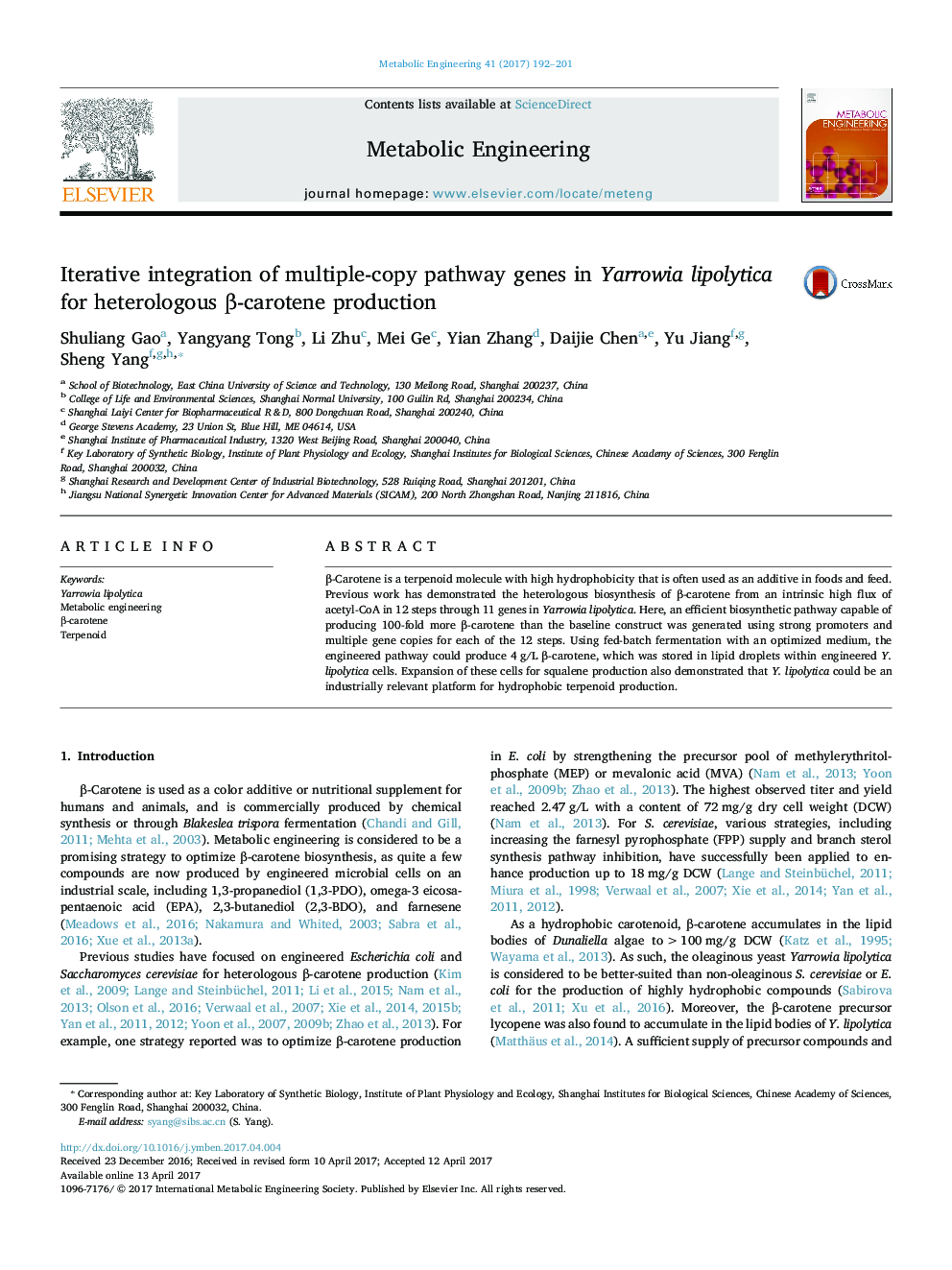| Article ID | Journal | Published Year | Pages | File Type |
|---|---|---|---|---|
| 6452691 | Metabolic Engineering | 2017 | 10 Pages |
â¢The first time engineering Yarrowia lipolytica for heterologous β-carotene synthesis.â¢Î²-carotene production titer achieved in this study is the highest level so far.â¢Y. lipolytica has the potential to serve as an excellent host for hydrophobic terpenoids production.
β-Carotene is a terpenoid molecule with high hydrophobicity that is often used as an additive in foods and feed. Previous work has demonstrated the heterologous biosynthesis of β-carotene from an intrinsic high flux of acetyl-CoA in 12 steps through 11 genes in Yarrowia lipolytica. Here, an efficient biosynthetic pathway capable of producing 100-fold more β-carotene than the baseline construct was generated using strong promoters and multiple gene copies for each of the 12 steps. Using fed-batch fermentation with an optimized medium, the engineered pathway could produce 4 g/L β-carotene, which was stored in lipid droplets within engineered Y. lipolytica cells. Expansion of these cells for squalene production also demonstrated that Y. lipolytica could be an industrially relevant platform for hydrophobic terpenoid production.
